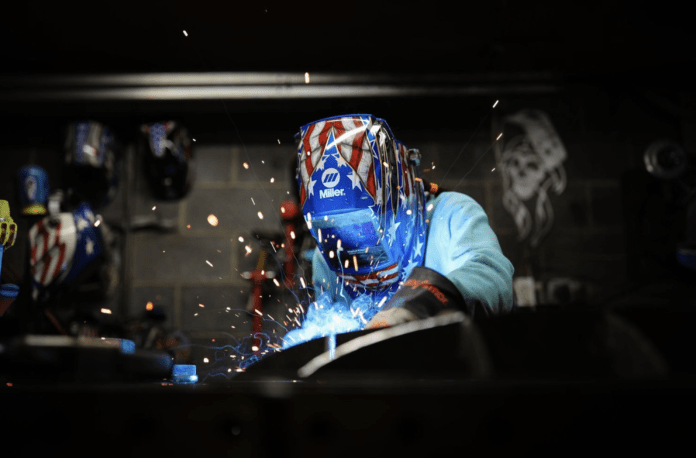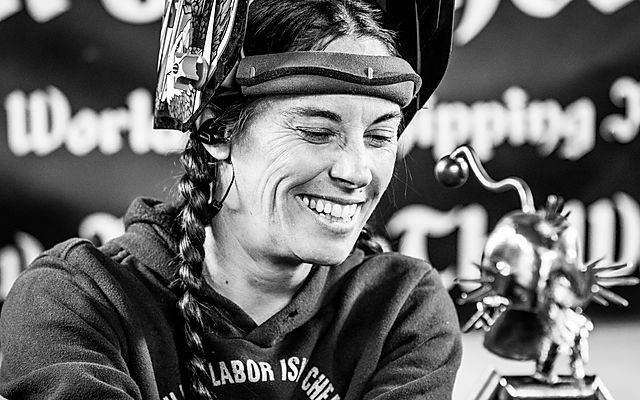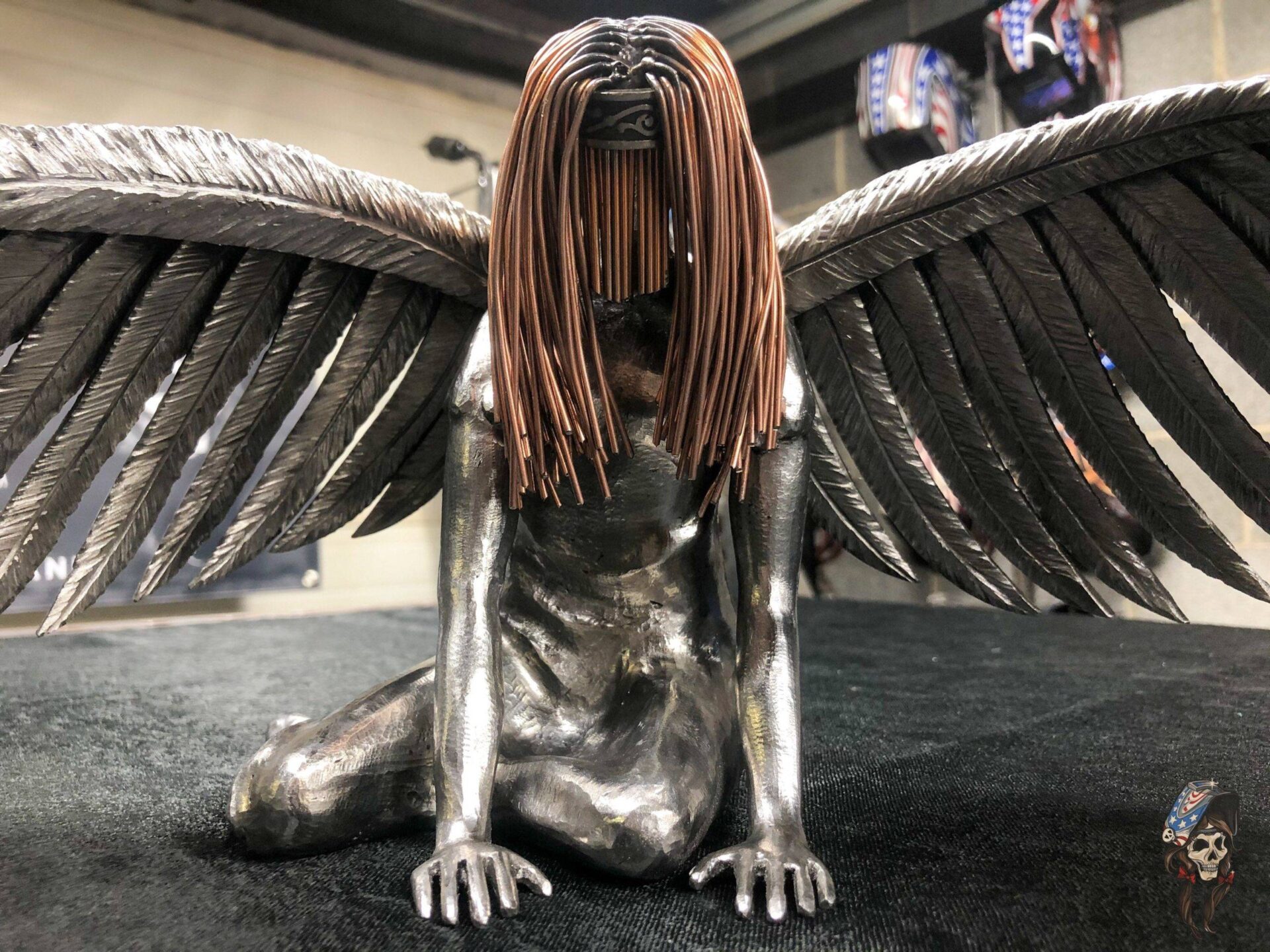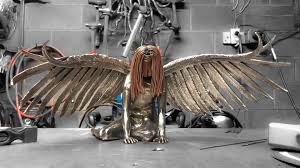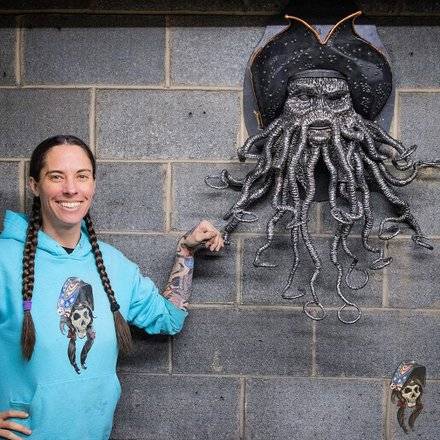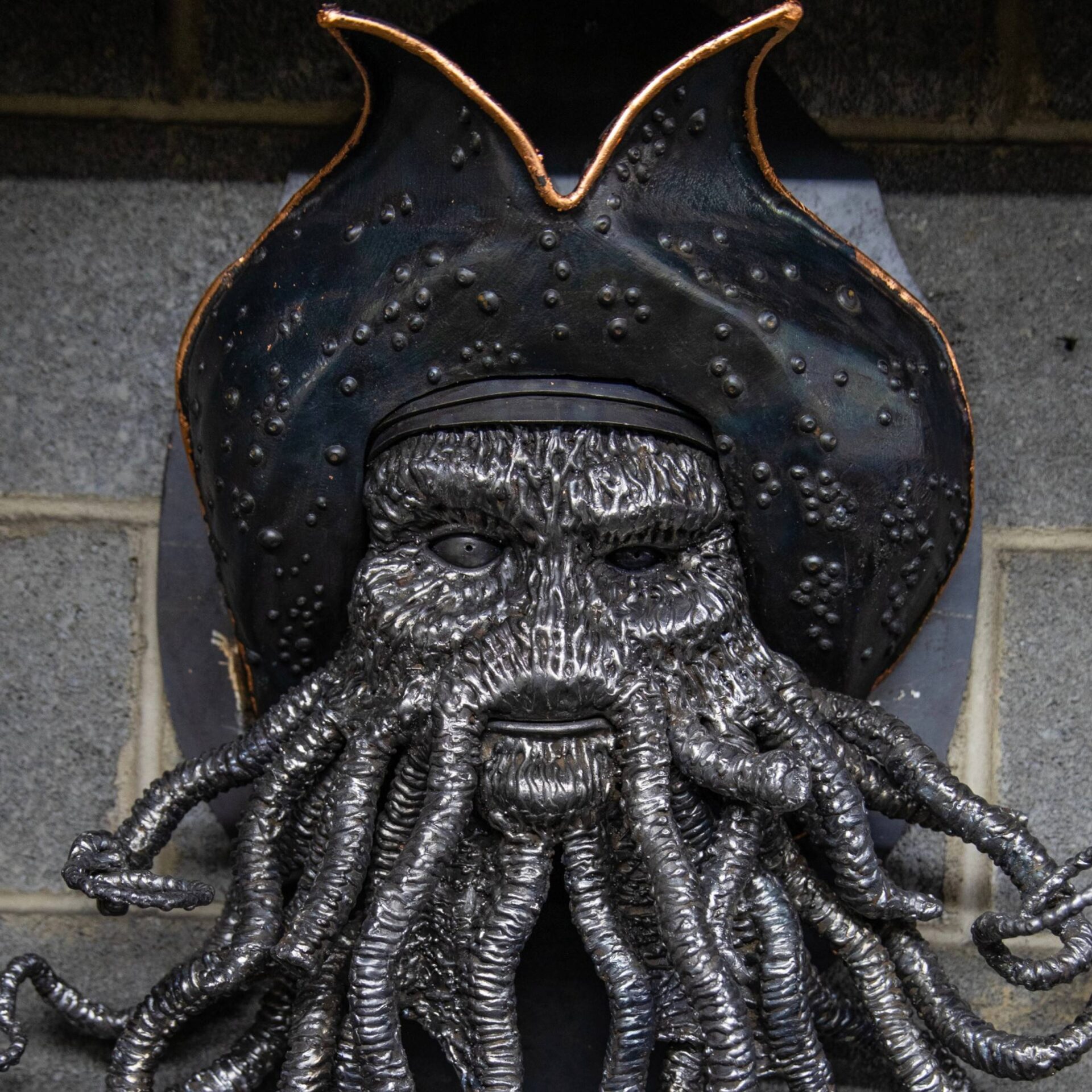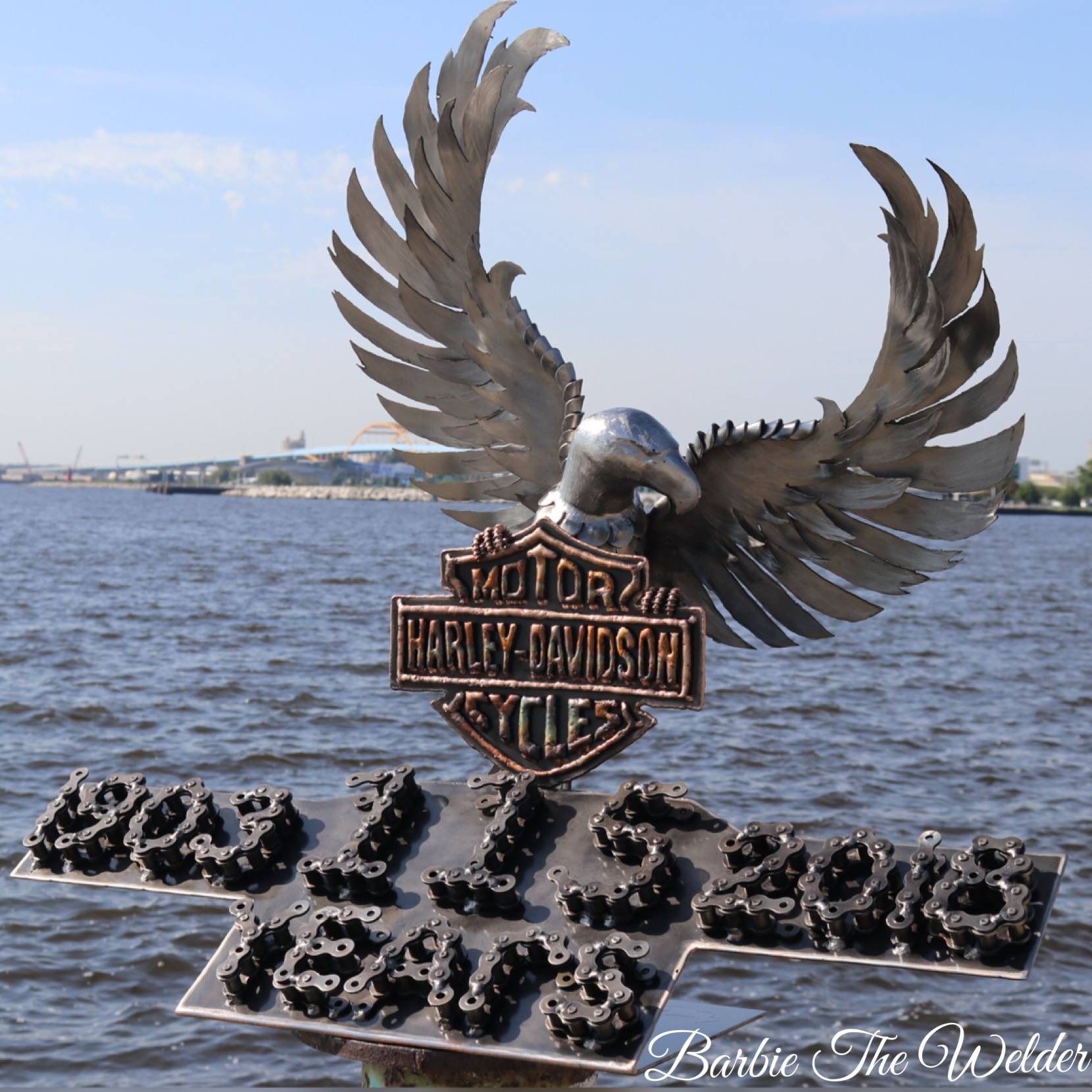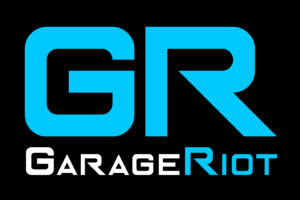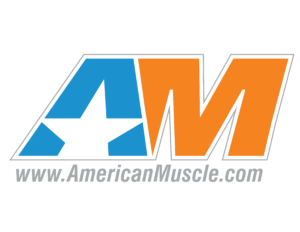Creating sculptures for various corporations such as Harley-Davidson and giving live exhibitions at events including the Sturgis Motorcycle Rally, Americade, and SEMA… this “maker” – came from humble beginnings, starting her new found passion 20 miles outside of Watkins Glen, New York. And with the help of social media she became an overnight success with her often gothic-inspired, self-taught art, and unique style of welding.
Barbara Parsons, better known to many of us as “Barbie the Welder” came on Break/Fix to tell us about her epic journey into the world of artistry and welding … even if you know her story, rehearing it in her own words is powerful and moving.
Spotlight
Barbie the Welder - Sculptor / Metal Worker / Artist
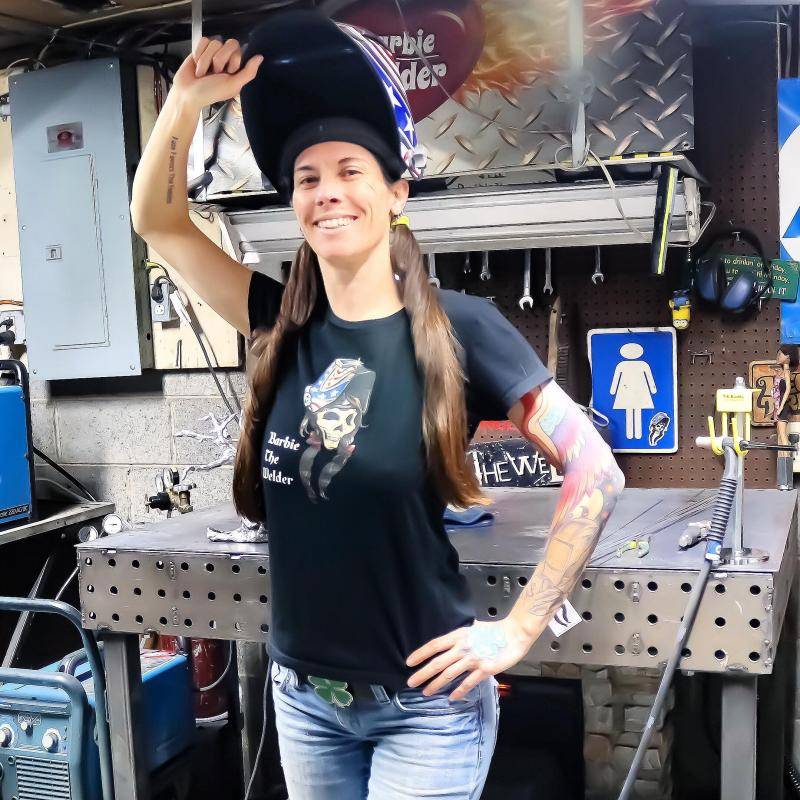
This maker - came from humble beginnings, starting her new found passion 20 miles outside of Watkins Glen, New York. And with the help of social media she became an overnight success with her often gothic-inspired, self-taught art, and unique style of welding.

Contact: Barbie the Welder at barbiethewelder@gmail.com | N/A | Visit Online!![]()
![]()
![]()
![]()
![]()
Notes
- What inspired you to get into welding?, and more importantly becoming an artisan in such a challenging craft.
- Did you already have a background in Art? Did you go to formal welding school?
- You have to source metals from all different places, many of those come from the Automotive (and Motorcycle) world; how do you look at a rotor, or a piston, wheels, whatever and say… this is going to become a statue? How does that transformation occur?
- Many might now know that you’re also a motivational speaker with sessions like “Welding & Skilled Trade Careers” – “Honor Thy Art; How To Be An Extremely Successful Artist” – “The Inspiration Blueprint; How To Design & Create An Inspired Life”
- How are you encouraging other young ladies (or any aspiring welders) to get into this craft?
and much, much more!
Transcript
[00:00:00] Hello and welcome to the Gran Touring Motorsports podcast, break Fix, where we’re always fixing the break into something motorsports related.
Creating sculptures for various corporations such as Harley-Davidson and giving live exhibitions at events, including the Sturgis Motorcycle Rally, Marade and sema. This maker came from humble beginnings, starting her newfound passion. 20 miles outside of Watkins Glen, New York. And with the help of social media, she became an overnight success with her, often gothic inspired, self-taught art, and unique style of welding.
Barbara Parsons, better known to many of us as Barbie The welder is tonight’s guest on Break Fixx here to tell us about her epic journey into the world of artistry and welding. So welcome to Break Fix Barbie. Thank you. I’m so grateful to be here. Gosh. I’m gonna to hire you to do my intros for wherever I go.
That’s amazing. Thanks. So let’s get into it. What inspired [00:01:00] you to get into welding and more importantly, becoming an artisan in such a challenging craft? I actually came outta high school, uh, with a background in auto mechanics. I went to Bo’s for auto mechanics. I went to college for Automechanics. It was my first love.
I dealt with a lot of sexism and at the time wasn’t able to handle it. I did the best I could handle it, but just definitely didn’t handle it and after seven years I left, I just fell outta love with it and worked for myself for a while hauling scrap metal and selling stuff on eBay, which was better than working for someone else, but very low income for me, even though I was working seven days a week.
Sat down with my neighbor one day to watch a movie cast away starring Tom Hanks. And in the beginning of this movie is this woman welding these giant angel wings and she was in a barn welding and it was dark and she’d got like this just giant sculpture and there’s like sparks going everywhere and between the wings and the sparks, like it just spoke to my soul.
I cannot put it into words, but I just knew at that moment that I needed [00:02:00] to be a metal sculptor, even though I didn’t feel like I had any artistic talent whatsoever, or had never welded before. I never even used cutting torches, not even for mechanics, which if I had first year mechanics, I would, but I knew I needed to be a sculptor, and so I spent the whole rest of the movie trying to figure out how I could make that happen.
So you don’t know what’s in the box either. Then you, you, you thought about welding the whole time. I dunno who Wilson is. I dunno if that dude get off the island. I have no freaking clue. I just literally just spent that whole time just, yeah. I don’t know. I was in box. You said you didn’t already have a background in art, but did you ever dabble with pen and ink or any other, you know, medium of art where you could express yourself?
Or was it when you first went into welding that you started to discover that you had natural talent and art? So if someone held a gun to my head before that and said, draw a picture of a dog, I would’ve died just completely, utterly, just I felt like I had zero artistic talent. My mom tried to get me to do calligraphy.
I was homeschooled first through [00:03:00] fifth grade. She tried to do calligraphy. I remember her having an art box of just like different art supplies. My water colorings were awful, like just everything bled in the page. Like I tried to do one and the whole book would be soaked. I mean, just like there’s just, there was no evidence that I could be successful.
Whatsoever. You obviously had to go to a formal welding school. Right? Not to be confused with fabricating. So what was that journey like going from, you know, working every day, hauling metal, doing those things to suddenly finding yourself back in school with a craft like welding? I actually took a night course for boces.
It was 104 hours over the course of six months. Uh, my local boss is in El New York. It took me nine months to save up for it. I was making $10,000 a year supporting a family of five and was relying on government subsidized help with my housing and with food stamps to to help feed my family. It took me nine months to save up the $1,200 for the school.
I already knew that I was in love with welding before I ever picked up a torch. And [00:04:00] when I finally got to go into school, like the first thing they let us play with was a plasma cutter. It really was a magical experience for me. Like all the way through, like literally like the universe just opened up and said, how can I help you?
I made that decision to be a sculptor and just one amazing thing after another just kind of happened as far as like. My teacher had never taught before in his life. He was 25 years at Jim Ostrom. Thank you, Jim. I love him so much. 25 years at the local welding supply shop where he would travel around to like the local companies and make sure they had the welding supplies he needed.
He would help them, you know, get that stuff for whatever reason. Decided to be a teacher. Now he did it for the one year and the one year only. Like what a, just amazing. He taught the way my dad did where he was like, be safe. Don’t know. Don’t burn your eyes. Go have fun kind of thing, which he taught way more than that.
But it was like in the style of my dad where it was like, let’s go and work hands on. He wasn’t like, let’s go read everything. The basic safety stuff. I went to work and it just was my style of [00:05:00] learning, and so he deeply encouraged me from day one to push myself and to try this and try that, and he saw my passion.
He knew what I wanted to do, and really just helped, really guide me into getting a job at a local custom fabrication shop. Where after six months of school, like I went to work at that custom fab shop and thought I knew what I was doing and like learned more in the first 40 hours of work. Like it’s whole different from being in school and welding a straight line.
Or Jim would have me, he’d say, we need a rack for this material. Here’s one of the racks that we have. He’s like, make something like that, that’ll hold the metal. And I went through the scrap bin and, and got the stuff I needed and copied it. And he saw that I could do that. And so he pushed me to go to work at the local custom fab shop.
Which I didn’t wanna go to work at because I dealt sexism and automechanics and thought that I would get the same thing in the welding industry. Looking at your background, you were there for a short time in the fab shop, and like I said, a lot of us like to pretend that we can weld really well, especially those straight [00:06:00] lines on two being and things like that.
We, there’s some really. Great fabricators out there can make some really cool stuff. And especially in the car world, if you can dream it, you can make it right. But when you go to sculpting, it’s a whole different scenario. You’re right up there with people that are painting and carving and marble and working in clay.
It’s a whole different way of working with the metal. And we’ll talk about that and then talk about your transition into that. So you’re there, you’re working at the fab shop and then. Suddenly you decide that’s not for you, right? Just like it wasn’t for you in the automotive world. So you decided to quit your full-time job and become an artist working out of the house.
How hard was that? What was that transition like, and what was it like starting your own business? Oh, I didn’t know what I was doing, so I actually worked at that custom fab shop for five years learning to weld and fabricate before I left to be a full-time artist. But I already knew before I took that job that I was going to quit that job to be full-time as an artist.
That’s a whole reason that I got started in welding to begin with. I [00:07:00] learned from brilliant welders and fabricators at Cameron Manufacturing and design that custom fab shop, and then took those skills into, I bought a garage that had a house attached to it, and then I saved up again. I got the welders and I was working part-time after work for about nine or 10 months, starting to weld stuff.
Starting to weld art and teaching myself how to weld art. I like as an artist, I’m completely self-taught. I was Googling metal art. And I would find something that someone else had made and I’m like, okay. I would reverse engineer it. I would, and it was simple stuff like horseshoe art or silverware art, like very, um, basic metal sculpture.
And so I would look at it and be like, okay, like I can cut that horseshoe in half and if I do that and I move it 90 degrees, it’s gonna make a toilet paper holder or whatever it was. And I was just making any kinda stuff that I was like, that’s cool. How can I do that? And went from that to, um, learning more complicated stuff, but, Stepping away from a very deeply secure job, the best pay I’ve ever had in my entire [00:08:00] life.
The respect that I had for my coworkers who are just brilliant fabricators, and just that comradery that you have in a, like, there’s a brotherhood in the trades. My family, there’s still my family. I love these guys just deeply for what they taught me because of the, you know, the knowledge they taught me.
I was able to step out and do this. It was scary as heck. I know I was walking away from insurance, my two sons medical insurance. I was walking away from 401K and a paycheck every week. Had I known what I didn’t know, I never would’ve left. As far as like, I had no idea I was running a business. I, I didn’t know I was gonna step up.
I’m like, oh, yeah, I’m gonna start an art business. I just needed to weld art. That’s all I knew. And, and past that, like, and it never dawned on me like about making money, which is like goofy to say out loud, but it’s the truth. Like I just, I had no freaking clue about brand new market sales. I didn’t know about social media, leveraging that and, you know, and, and using that.
And like, I posted a couple of pictures on Facebook, which was the only platform I had at the time. Oh, I made this, but I was so scared [00:09:00] to show people what I made because it was, Something I’ve been working towards for about seven years. I think it was at that time, literally like this journey where everyone just thought I was bat crap crazy, like my parents thought I was silly to go into welding.
My husband told me no, I couldn’t go into welding, and then I made a defiant decision. Since I was the one making the money, I was like, this is what I’m going to do. And so like all along the way, like people were just like that silly. But then once I got that job and I was welding, I was making money, my parents were like, oh, my daughter’s a welder.
This is awesome. She’s very secure in what she’s doing. When it was time to quit my job, I knew in my heart it was time to go. My mom cried and my dad told me it was the worst mistake of my life to walk away from that job, which was so hard to do because like, It was made harder. Like Ira was already like halfway out the door and then they start talking like this.
I’m just like, am I making mistake? And the thing is, my desire to sculpt was so great. It was hard to go against what they were saying cuz like they’re intelligent people and I know they want the best for me. They want [00:10:00] that security, they want it for the boys. Just my need to skull is so great that it was pretty much f everything else I need to do this for me.
And just listen to that and, and went for it. The first nine months of being full-time was like the first day. I’m just like, oh yeah, to crack a beer at lunch, it’s gonna be amazing. Which it never happened. God, I sat in here for nine months and I, I made art, sell anything because I just didn’t understand, like, and I’m not a dumb person, but it just, The money never dawned on me.
I didn’t get into this to make money. I got into it to make art. Thankfully I got into it to make art cuz had I got into it to make money, you wouldn’t know who I was. I’d still be working back at Cameron because the money there is amazing and the benefits are even, you know, even better. I just, I sat in here and I sculpted, it was magical for a while because I was working full-time in here.
Now I’m working 16 and 18 hour days versus, you know, six hour days in here. Right? And so I was going through supplies a lot more, and then I also wasn’t selling anything. And so the money I’d saved, I’d cashed in my [00:11:00] 401k, I’d taken a personal loan out the day before I went full-time as an artist. Like, yes, I’m gainfully employed, figuring that like worst case scenario I.
Pay that loan back, but it would give me that, you know, that cushion. And I had a little bit of savings through extra work and really poor decisions in a relationship I ran into, uh, I had a guy see me, uh, like cashing in my money. I had low self-esteem at the time and chose a relationship with a human being who I thought loved me.
And he was looking for the money, you know, my decision. He used me for my money and then kicked me to the curb and it was a physical kick to the curb. So grateful for it because it is definitely. Made me into a stronger person. Never would I ever come close to letting anything like that happen again. But at the time, it’s what I needed because that’s what I gave myself.
Made it harder on myself. But I’ll tell you what, man, it’s definitely coming back from all of that. And what I’ve done is just, it’s built me into so that I’m so proud of today. Hated myself in the beginning, like hated myself most of my life. Through [00:12:00] welding and through my journey, like I gained self-esteem a little bit.
And then as I grown myself as an artist and a business owner, which I know I own a business today, grown myself into someone I’d like, I deeply love who I am. I respect who I am, and that’s just complete difference. But that’s because of the art and the things we build, build us. Absolutely. As you leverage social media to your advantage, I, I saw that you started going down the path of a lot of other makers, which is to leverage things like Etsy and things like that.
People looking back, probably wanna know what was one of the first things you sold out on the open market? Oh my gosh. The first thing I made was a three-tier chandelier, and I owned that for a year and a half. Actually. The first thing I ever made is art, was I was still working at that custom fab shop, and I’d taken these punch outs from metal and arranged them into three daisies, and I pulled stuff outta the scrap bin and I.
Made that for my mom and dad for Christmas. They still own it, and I told ’em like, that’s gonna be the most valuable one. I made another Daisy after that for [00:13:00] myself, which I think ended up breaking because I’m tough on still very simple things we’re just like tack welded together, which is still art, and we all start there.
We saw it with those simple things. For me, I just kept pushing myself to, you know, like I still like on a daily basis, like push myself hard to improve myself over myself. But yeah, like the first pieces were like, I, I love flowers. And I welded those. I fabricated a bunch of stuff designed and made a, basically like a ha hanger, like a jacket hanger.
It’s like a shelf. And then it had my boys’ names on it. And then it had three bolts for like, you can hang a sweatshirt or hang a purse or hang, hang something off of it. Well, I hang my purse off of it cause I still use mine every day. So what was the item that really took off? What really set the stage for you?
It was all downhill from there. This is a horrible question to ask me, but you want the truth and I allowed swear yourself my big dick hot dog cookers.
No shit. Like once I figured out the whole selling thing, [00:14:00] which it is still taking me, like I’m still learning on a daily basis, but. What I learned is I needed to go and set up and sell at shows was at the beginning of like basically taking my whole, you know, my whole shop and set, you know, setting up, I was welding live.
I, I started like this live welding thing I was doing. I was figuring out like what stuff would sell and I would travel back home and I would hammer out a bunch of stuff real quick and then travel the next show I was going up and down the east coast, basically sleeping in the back of my truck, you know, setting up for the weekend and then welding for three or four days during the week and traveling.
It was amazing. Holy crap was crazy, but, and it was like selling on, on Etsy is what it allowed me to reach people worldwide from my one car garage in, you know, in a very small town. But, uh, it was the big dick hotdog cookers, someone else had made one and I saw it. I’m like, that’s badass. And so I made it and I made a picture of it, like out back with two hot dogs on it.
Get a picture what it looks like. Just go Google it. My YouTube video will come out. Cause of my social media following. Thank [00:15:00] you to everyone who supports me on social media. I’m so deeply grateful for you. It goes viral and then I’m selling these things like on a regular basis to where I’m literally like every week I’m sitting down and making like 40 sets of these things and I’m selling the set and like thank my truck off with these hot dog cookers and like it’s my electric bill.
I’m finally starting to feed my belly. I’m not scared that. I’d like to be shut off or I’m gonna lose my house. Like it finally got to a point where I’m just like, and that’s what did it was those, a lot of us have probably been introduced to, you know, metal working and things like that through the popularity of shows on History Channel, like Forged and Fire.
I know my wife and I get really excited watching that it’s night and day compared to what you’re doing. Right. But I’m not here to say that I have some sort of concept of how metallurgy works and you know, tempering and all that kind of stuff. But what I find as a comparison is that understanding of sourcing metals from different places, and on a show like Forg and Fire, it’s always like, here’s a crushed car.
Take it apart and turn it into a sword. You [00:16:00] know, you’re like, okay, whatever. But in your case, you’re looking at metals from all over the place, and obviously you have the background in doing that from salvaging and scrapping and whatever, but how do you take something from the automotive world or even the motorcycle world, you know, you look at a rotor or a piston or a set of wheels and say, I’m gonna turn this into a Statue of Liberty or something like that.
How do you go from raw? To production, what is that journey like for you and, and where do you start? It’s completely a practice. In the beginning, like I said, I was looking, I was Googling metal art and I was looking at what other people were doing, and that’s where I started was by looking at what other people were doing and copying it.
And that’s where you start. And what that does is you do that enough and spend enough time copying other people, you know, taking their design and maybe twisting a little bit and making, you know, putting your unique twist on it or copying it directly. But you start with that. But what happened for me anyway, is one, I’m very just, I, I feel like outta school, like even in school I was able to do it.
I could see something I could make up. [00:17:00] And, and that’s, you know, I took that to the, to the Googles. But then after doing that enough times, it just starts training your brain. And with practice, anything gets easier. So then I started seeing like I made a man outta silverware. Like that’s an arm, that’s a leg that’s ahead.
This is really cool. Like there’s a body. But then I started having like all these like cast off pieces, like the ends of silverware because I was using one part and not the other. And I was sitting there one day and I go, The way it’s just spread out of the table. I’m like, that’s an Indian headdress.
Like that would be really cool. And so it just kind of progressed from copying other people too, because I’d spent so much time, like if you bend the fork here at 90 degrees, you’ve got a hand and you’ve got a, you know, you’ve got an arm and like, here’s a spoon is the head and like the, the rest of it’s like the body.
And then you like just that practice of seeing it. I was able to take that and just transition into making my own designs and one of a kind stuff that other people weren’t making and, and again, it started simple. Like I said, the Indian headdress was just the ends of silverware. Like they’re [00:18:00] very ornate to begin with and I love that.
Take them and just weld ’em together. Now here’s an Indian headdress and I saw the Indian headdress and I go a Turkey tail and then like, okay, I could weld a Turkey and how would I make a Turkey? And like that’s got the gobbler thing and there’s this little belly and the forks are feet and it’s just that practice.
But the more you do that, your brain is literally just making these amazing connections. You’re talking and welding. For 15 years, I’ve been fulltime as a sculptor for seven and, but I seven years, it’s. 16 and 18 hour days, and it’s bare for me. Like I just started taking days off last year, like no kidding.
It was no days off for a long time. And so my art has progressed the way it has because of deep focused work over a long period of time. I mean, it’s really incredible what you can do when you’re looking at objects just laying around. I mean, it’s pretty neat what you can abstract from that. But then there is abstract art, right?
The really crazy stuff that you see. But then I. There was a transition in your art as obviously as you progress, you become a [00:19:00] master and all these kinds of things. And for the folks that aren’t seeing this video and the behind the scenes on our Patreon, there is a pretty famous piece of work that you’ve done and it’s hanging behind you in your shop.
And that’s Davy Jones, right? Similar to the one in the Disney. Pirates of the Caribbean movie and it’s a tool holder, but that’s not made from scraps of spoons and forks and things like that that you found around the shop. How do you forge something like that or how do you weld something like that? How did that come to be in other pieces very similar to it in your portfolio?
So I did start with the spoons and forks and horseshoe stuff, which is I feel like an amazing like entry into. Metal sculpture. From there, I was doing the shows and setting up, and I was welding. Like I said, I was coming home and hammering out like I was mass producing stuff because I knew what was selling.
And it was like the horseshoe stuff, like $45 is a great price range. And so I was doing that for a long time. I say a long time and time gets away from me. I was doing that for, it was a couple of [00:20:00] years of, of doing shows like that. Social media was growing. I was teaching through YouTube and so people were like, once I learned how to do stuff, I was going over on YouTube and teaching other people how to do it because of being self-taught.
I’m like, how wonderful would it be to put that out there? Now, I sure as hell didn’t start out and I’m like, oh yeah, let me teach people metal art and write books and what the hell? Like, this doesn’t make sense. I was teaching people and I was mass producing stuff. It was feeding my belly, but it wasn’t feeding my soul.
It was literally like crushing my soul to mass produces stuff. And I was so grateful. Like, so grateful. Like my truck’s being paid and my house is being paid and my electric’s on, and you know what I’m saying? Like I got a steady stream of spaghetti was going on that I could like, you know, I got like the case of SpaghettiOs instead of one can like moving on up, you know?
But it was feeding my belly and not my soul. Because I was having to mass produce this stuff. I’m just like, I don’t mean any disrespect in this, but like, Traveling to the shows. It was just so time consuming. And I’m like, my art is just staying stagnant. I’m like, I want my art to [00:21:00] really improve. And I was like, the way to do that is I want more shop time.
It’s a lot of travel time and I love the fact that I got to go out and I got to, you know, I got community, I got other entrepreneurs that are setting up and that was just so wonderful. And I love to travel, which is wonderful. But I also, you know, slept in my truck every night and you know, I’ve got my son sleeping in the front of the truck and I was like, It was rough, but also very grateful for that.
So I was like, I made a decision. I sat at the Shamong County Fair, which is a local event. It was like a five or six day show, and it was like 70 some hours of sitting in my booth and not welding. And I sat there and I’m like, you know what, girl? You were gonna learn how to sell online? And, and I, I did 48 shows in 52 weeks that year.
I said, you get three shows next year, pick your three favorite, whether it’s a social show or a monetary show, pick your three favorite and you’re gonna learn how to sell online. Now, I didn’t know how I was gonna do it. But I knew I needed to because I knew I needed to go back to sculpting things that really made my heart happy and I [00:22:00] wanted my art to improve.
I was making some bigger pieces. And at that time I’m like, I think $250, three $50 was like my top for what I was charging, you know? And those were like more one of a kind. But it was a lot of those hot dog cookers, you know, 45 bucks for a set of two, and I could hammer out 80 of them in eight hours. Like, no kidding.
And it was soul sucking for me. I came home from that show and I just started going on YouTube and Googling like how to sell online. And it was the social media is what, you know, like where it led me to was like, just build up the social media. Yeah, Instagram and YouTube around 2015 and just started really going to town on figuring it out.
And so I had finished out the year with shows, which you know, was good, but I was making enough money to basically. Pay for and travel to the next show and maybe have like, maybe like a hundred bucks extra and now you’re talking, I need food. You know, when they say starving artist, I did in the beginning, but that’s because I didn’t understand about sales and branding and, and marketing.
So, and [00:23:00] I didn’t even know those terms back then other than sales, which. I kind of sucked at, uh, thank goodness the art was good because I really didn’t have to say anything. I would like sit in a booth and I would be super, like, nervous about it. Someone would come in and be like, oh, does your husband do this?
Like literally my name was on, you know, behind me. Like, I put Barbie, the welder, a little banner I got on Vistaprint and they’re like, oh, does your husband all this? And I’m like, yeah, I’m just a pretty face. Like, it just, it was kind of harsh, you know? Thank goodness I had a good sense of humor. January 1st.
I’m like, you know, no more shows. I stopped booking stuff. And it was awful for about three or four months. I, I didn’t sell diddly shit. And I was like, like, bitch, you made a mistake. Like you made a mistake. This is such a, like, no money came in. Like, I like my like 10 bucks, you know, like $35. Like, I mean like, I literally was just like, I’m gonna have to do something different because I can’t pay my mortgage.
No. There was like never enough for savings kinda thing. And I also didn’t make good money decisions, so I was out buying like, you know, [00:24:00] seat covers for my Jeep, but I shouldn’t. I was a major problem also in my business. They were ke flash seat covers. They were like waterproof. They’re amazing. After like the third or fourth month, like, I mean just like every minute that I wasn’t working in my shop.
I was working on my business and so there were like zero downtime. And when I was traveling, like the last couple years I was traveling. I’m playing like Zig Ziglar on sales, like audio books, like listening to that, like it was like Tony Robbins and, and Oprah and like the people that I like, I, I had this built this community of entrepreneurs around me that deeply helped me improve myself.
It started helping me improve my business and probably somewhere in there was the idea like, you know, I really need to like, The art needs to improve because I’m just not happy like shitting stuff out. All due respect to everyone. I bought my stuff, but it was pushing myself like that. After a couple of months because of working on social media, learning a little bit more about sales, I was showing myself in a unique way because of teaching on YouTube.
It was drawing people [00:25:00] to what I was doing. It started taking off a little bit here and there a little bit there, you know, starting to make a couple hundred a month.
There’s a couple of big sales where like, I sold something, it was like $850 a time, just like mind blown over. Cause I’m just like, that’s a month’s worth of, you know, pays my truck and pays my house, which I had at the time. My son actually, my oldest son moved back in with me to help me pay for my bills because I couldn’t afford it.
His friend moved in with us and so I like only had to pay a third of my bills cuz these guys were, were covering my ass, which so dang grateful for that. Had it not been for them, like I probably still wouldn’t own, I probably wouldn’t own the house. So the techniques used to create Davy Jones are very different than those of the the Indian headdress.
How did you go from one to the other and what’s it like to create a sculpture more like Davy Jones? Oh man, that makes my heart sing. It started with a local entrepreneur as part of a group, commissioned a sculpture [00:26:00] of a sad angel and framed it out in quarter inch round barn, and then took 18 gauge steel and sheeted it like the outside of it, like patchwork.
When it got to the hands, I tried and tried and couldn’t figure that out of how to get that to look good, but it just, it just made the hands look like mittens and it was awful. I had the idea to take five eight inch round bar and sculpt it into hands, like cut a little notch and a finger and bend it.
That was my very first true like sculpture. Like not only just sculpture, that sculpture. The guy just took a huge risk on me cause I said I could do it. And he just, there was no proof whatsoever. He literally just took me on my word. That was my first masterpiece. And not only did I learn how to make larger sculpture that way, cause it was just problem solving, I’m like, how can I, and so asking myself, how can I make the body.
So I, you know, I was taking pictures of me sitting on the floor in like that position, and then just looking at that picture and referencing measurements off of that. But getting into those hands and having that not work out in the way I thought it would, I started seeing that and I was just like, [00:27:00] Ooh, that’s a game changer for me.
Not only was it a masterpiece sculpture, like a true in my eyes, it’s my first tattooed on my arm, true masterpiece sculpture, but it was physically sculpting metal versus. Attack, welding, something on that right there. Something shifted in my mind. And that’s when I started seeing metal in a whole new light.
So what are some of your favorite pieces that you’ve been commissioned to make? The number one favorite piece ever would be, uh, two sculptures for Harley Davidson, which blew my freaking mind. Wild, wild, wild. That, uh, I had that opportunity. And not only one, but two of them. Like, here I am this again, self-taught artist.
So what was some of the hardest ones to produce? You look back and go, man, I don’t want to do that ever again. Oh my gosh. The first one for Harley Davidson was for, um, the 35th anniversary of hog, the Harley owners group. That one was up until that point, by far, the hardest [00:28:00] sculpture I welded. Because I welded it live at Sturgis, you know, with a little one 10 welder and a 50 foot extension cord, and I had no idea if it was gonna work, but I told them yes and then showed up and figured it out when I got there, like literally just kind of handed my ass like, holy crap, I hope this works.
Normally to make a masterpiece sculpture. I’m looking at three weeks minimum time in my shop by myself without distractions. I had nine days at Sturgis. I had a 10 by 2010 set up with all my art to sell. And then I’ve got hundreds of people a day coming over and talking to me and wanna know my story wanted, you know, and I love people, so I’m just like, but also like I need to get this done.
And so that was finished two hours before I presented it on stage to Harley Davidson. Other one, like just deeply having to push myself and just that first one was, was one of ’em. And then, uh, the one I just finished recently, which actually hasn’t even been unveiled yet, but made a sculpture for Rock the Trades, which [00:29:00] is owned by Stanley Black and Decker.
And it is a six foot tall tradesman. A man that, uh, represents. All the different jobs and careers and skilled trades. He is completely made out a quarter inch round bar. And then people from all over the country sent in tools special to ’em, special, their parents special grandparents, and those tools are welded into him.
It’s ridiculous because the entire thing is TIG welded and most of it all is TIG welded. And it took me approximately five months to create, which is about two months longer than anything I’ve ever done. But it is by far my best sculpture I’ve ever created. Deeply proud of it and I’m super honored to work with Rock the Trades with Stanley Black and Decker DeWalt craftsman.
It’s the deepest honor you to be able to represent tradesmen and showcase skilled trades careers that are, uh, there’s so many amazing opportunities in it. I’ve, through my journey, become an advocate for the skilled trades because of how it’s built me. And how much joy that I find in it. Just got done speaking Saturday at, uh, local [00:30:00] Sheet Metal Workers Union, and two more days I’ll be going up to Buffalo and speaking to the American Welding Society up there.
And it’s just, it’s just a mind blowing diot with Watkins Glen and international being in your backyard. Is there any Barbie, the welder statues in the works for the racetrack or anything that we should be looking out for when we’re downtown? No, but we need to talk to them about that. Like why, why not?
Who can I sculpt? Like who would be like the most amazing person to sculpt for that? Wow. Yeah. I feel like I need to make a phone call. I’ve actually set up and sold at the track at a wine festival that they had up there. Have not made a sculpture for the track. In fact, I’ve not made a sculpture for any track yet.
I was at Richmond last year and uh, yeah, I feel like there’s a couple sculptures that definitely we have an amazing history in our, in our town. Man, I love, I, I love this area. It’s incredible. Barbie, not every project is a success. So how, let’s be serious. So how do you learn and grow from the mistakes you’ve made and [00:31:00] the, and the failures, and was there ever a worst idea ever or a project that you’ve put to the side and haven’t touched in quite a while that maybe you regret starting or it’s one of those, you’ll get around to it as we say.
So I definitely have no regrets whatsoever in anything I’ve created, but I have failed my way to success. I literally have turned every failure into a stepping stone, and I have paved my way to a very happy, successful life. And it just like one failure after another and it’s fall down seven times. Get up eight.
That is like the only way to be an entrepreneur. And I think the only reason I’m here is because I did go into business to make art. It had nothing to do with money and thank goodness, and I think that’s why most businesses fail, is because if you go into business to make money and you don’t make money, there’s nothing left.
But if you go into business for a passion, like when the money’s not there, the passion is. I definitely have a 10 foot dragon sitting out in front of my house that I started sculpting in 2018, I believe it was. I have a six foot tall garage door. Ask me why I made a 10 foot [00:32:00] tall dragon, like sometimes just happens in here.
It’s a magical place. I come in here and I go, you know what? I wanna, I wanna weld a dragon. Freaking long dragons. So I started making a dragon, but like I go into the zone and it just like things happen. The only way I could describe it is literally like I’m in the back of myself and I can see my hands moving.
I know I’m doing it, but it’s almost like ai, right? Like it’s just almost like this AI experience. And Jesus, I just had like this next thing I know, I’m just like, what are you doing? And it’s like this 10 foot drag tall dragon. I had to cut his head off to put his legs on, and then I had to take him outside to weld the head back on to make sure it was, you know, like symmetrical.
Is that the right word I’m looking for? It was like proportionately, right? And then I’m like, what the hell? Here I am, like at the time where I’m not financially in a good position. I’m making this. I didn’t have anyone to buy it. I’m pouring.[00:33:00]
Out in front of my garage door and it was like the last time I welded on it. It’s got a couple scales on it. It’s amazing. I want to finish it so bad. I don’t have the space to do it. And I am working on selling my house this, uh, this summer and moving to Daytona Beach, Florida because of the car culture and the bike culture that’s there, cuz I’m madly in love with all of that.
And I’m just like, I just, I literally looked at the dragon today. His name is Argon. I’ve named him. It’s awful because I have to look him in the eyes when I walk past him to get the mail and I’m just like, I love you buddy. I’ll get you soon. And just, it may or may not be a lie. I’m not sure what to do with them when I move.
I. If I move this behemoth, I’m gonna have to drive him to Florida, which is gonna cost money and take time. And so I’m just like, oh my gosh, like what to do. So it definitely was one of those things where the art comes through me, like I work purposefully, but also like with David Jones, like making him knew I needed the hammer holder.
It’s the whole purpose of making him, and I [00:34:00] still look at it and I’m in shock that I did it, if that makes any sense. It’s, I mean, it’s absolutely breathtaking. Oh, thank you so much. Like I know I did it, but it’s also just very surreal. Like I look at stuff I make, I’m mind blown and gobsmacked that I could do what I do.
I still push myself on a daily basis to, to do better. I’ve got a five foot tall phoenix. I’m starting tomorrow. I’m stoked on. It’s not gonna be done until I blow my own mind on that. As far as like, it just has to be better than anything I’ve ever done and like really push the details and like the, the feathers and just everything and just make it look like it’s literally ready to fly.
I constantly surprise myself and I don’t even know something, like I know what I’m doing, but also it just, Oh, I wish I had better words to tell you just how, like how much I’m in love with what I’m doing and how honored I am to be able to do this on a daily basis, and how shocked I am that I can do too.
So you mentioned earlier, and many people might not realize that you’re also a motivational [00:35:00] speaker and you have sessions with titles like. Welding in skilled trade careers, honor thy art, how to be an extremely successful artist, the in inspirational blueprint, how to design and create an inspired life.
But there’s one in particular that got my attention and it says, and it reads, fuck you fuel how to turn shit into sugar. Learn how to take every negative thing you’ve experienced in life into fuel for success. I love that, by the way. I think it’s very catching, but what are these all about and how does somebody.
Get involved or attend one of your seminars, those three books. The Inspiration Blueprint, the The Honor the Arts, another one, and then the The Fuck You. Those are books that I’ve written through my entrepreneur journey, what I’ve learned and how I molded and shaped my life into a life that inspires me.
Without needing motivation, companies will hire me and have me come out and, and speak to their people. I’ve spoken for the AWS a couple of times. Last one was just, I spoke at Fabtech that was about being an entrepreneur, like how to [00:36:00] build an online business. I have several subjects that I speak on. It is.
It’s just crazy that I get to do that. But yeah, like a company will have me come in, I, I built a sculpture for a company and they had me come in and spend time with their employees because they wanted some of my juju rev off them, and it kinda kinda went from there. But I’ve spoken for the AWS a couple of times and I’ve spoken at schools and everything else.
It just like from third grade up to like seniors at both. It’s very, very cool. But it’s because of what I’ve built in my life. Like I just wanted to make art. It was a very selfish, I call it selfish. It is a very selfish mission. I just need to make this art. And what’s transpired out of that is I turned into a teacher through how to, you know, how to weld art videos on YouTube.
I’ve written three how to weld art books, which is just weirdest thing ever, cuz English was my. Worst subject in school. And then, then the, the other three books, which are how to run an art, like how to create an art business, like the actual business part of like the social media and how to get, [00:37:00] kinda get sponsors to like, to give you stuff and how to like have them pay you to work with them.
Um, you know, different stuff I’ve learned. But yeah, the speaking is like scary as heck at first and definitely sweat a lot. I tell people, I’m like, I’m not a speaker, I’m a welder. I’m just gonna hang out here and we’ll talk about some cool stuff. As cool as I get to go into places and, you know, hopefully through my journey, my, my UPS downs inspire.
Inspires them instead of needing motivation to, to get out of bed every morning or, or working in a chat that they’re not happy. You know, like life is so dang short. It’s, it’s mind blowing to me that to stay at a place like the money’s good, but it’s like it’s feeding your belly, that it’s not feeding your soul.
So it’s finding that soul mission and then staying as in that as much as possible. I think you hit on the word of the day for this particular episode, which is inspiration and it’s really important to note that as we record this, we’re doing this during International Women’s Month. And so I wanna ask you some really pointed questions, you know, as [00:38:00] one of few female guests on the show, and we’re building that out as we go along.
But I wanna understand how you’re using your craft and your art to encourage other young ladies to, or other aspiring welders to get into this profession. It’s. Showing up and running. My welder, not my mouth, I think is most of it. It’s just showing my skills is going out there and putting my best foot forward and letting my work speak for itself.
I am people powered. It’s not, you know, one sex or the other, or whoever. It’s just, I love to show people how amazing the careers in welding are, or any skilled trade is just by going out there and doing the best possible work that I could do. Like when people think of welding, they think of like an industrial building or a bridge or pipeline, and that’s usually like, that’s where it ends.
Or, you know, working in a factory, which these are all amazing, amazing career opportunities in welding. Hall just build us whether in our paychecks and our pocket right, our, our pockets and our, our, our [00:39:00] souls. Art for me is like, it’s been a gateway drug to show people how amazing welding is, and that there’s just other areas of welding than pipeline going in and showing up and doing the best possible work I can, and then showing that on social media, whether it’s whatever platform it is.
When I show up and I’m showing skills, other women can see themselves in a career in welding because I’m there or because other women are there and other women are showing it on social media. I encourage all women, if you’re comfortable doing it, show your welds on there. Like show, you know, show what you’re doing, show you in your welding hood because.
We’ve got less than 5% of all welders are women, which is mind blowing to me because I see a ton of them. But I also, I seek them out and I do everything I can to raise ’em up, even if it’s just like liking their posts that they make. But when I show up and I show myself, you know, as a woman, you know, in the welding industry, Showing my skills.
Other women see that like Chica and so can I. And the more women that do that, we’re gonna bring more women into the industry. They’re gonna [00:40:00] see how empowering it is, how amazing it is, like how good it feels, but then also how damn good it pays too. It’s this deeply rewarding career. I think you touched on something that some of our previous female guests have hit on, which is, see Me Be Me.
Right? We talk about that, especially diversity in the paddock and things like that. If you don’t see yourself there, You won’t be there. So it’s important to, like you said, to show off your craft. You know, even if you’re learning is to get that encouragement from other people. It helps build your esteem as you talked about it earlier.
And so that leads into my next question, which is looking back over your long career now in welding, and there’s still a long future ahead, What kind of advice would you give to somebody starting out learning how to weld? Don’t judge your day one against someone else’s day 100. Look to someone else to see what they’re doing and say, yes, I want to get there.
But don’t judge yourself against what they’re doing. Don’t look at Davy Jones and say, I can never do that. You need to look at what you’re doing and then work to improve yourself over yourself every single day. [00:41:00] So Barbie, if a kid came up to you tomorrow, Especially a little girl and asked you, why do you weld?
What would you say? Oh, that’s such a great question. Welding gives me freedom to make whatever I want. I, I like it right to the point. With that said, Barbie, any shout outs, promotions, or anything else you’d like to share that we didn’t cover up until this point? So grateful for everyone that likes and shares and comments and follows my social media.
My shout out is to all the people that support me online. Without you, I wouldn’t be where I am doing what I’m doing. My business is completely online. And from my very small garage in my very small town, I’ve sold art to clients in 15 different countries and worked for major corporations and had just like the most amazing experiences.
And that’s because of people on social media that take their specialty, their limited time on earth, that they will spend time messaging me, writing to me, commenting and stuff, sending me stuff. [00:42:00] I’m so damn grateful for my supportive following on, uh, on social media. Grateful for you guys. Love you to the moon and back a bazillion times.
Barbie that said, you know, I want to thank you as well for taking time out of your day to sit and talk with us and tell your story yet again. And you know, maybe one of these days, hopefully before you move to Daytona, or maybe when we’re down for Rolex, we’ll get to see you around Watkins Glen or one of the tracks.
Cause I think it would be awesome to talk more about this and expand upon it and get people to meet you and, you know, maybe learn about Barbie, the petrol head, or maybe the motorcyclist or you know, the other secret things that we don’t know. Oh yeah. That’d be amazing. I listen, last year was my best race year ever.
I was at Richmond. I had pit box, uh, seats at Richmond was amazing. With Al, I was at the N H R A nationals out in Indy, and I got to go to my first four L one race, like literally the best racing year ever. Oh my gosh. I’m not sure I’m gonna top it this year, but I need to get started. [00:43:00] More to come on that.
So to check out all the amazing artwork that Barbie produces through her welding, be sure to check out her website, www.barbiethewelder.com. Then click on Sculpture gallery or follow her on social at Barbie, the Welder on Facebook and Instagram. You can also touch base with her on LinkedIn or check her out in action via TikTok.
And better still, you can learn some new techniques through her YouTube channel. And as always, details on everything we covered in this episode will be available in the follow on article on gt motorsports.org. So Barbie, I cannot thank you enough for coming on the show. This has been an education and an inspiration, and I think all of us look up to you as a mentor is for those of us that want to weld and those of us that can, or claim that we can, you know, Looking at your work is absolutely amazing.
It’s stunning and it continues to get more and more impressive as every day goes on. So we look forward to some of these new reveals that are coming out here in months to follow. And, and [00:44:00] again, thank you for coming on the show and talking to us. I’m so grateful for your time and hanging out and getting a little peek into my life today, man.
I’m so grateful for you. We thank you as well.
If you like what you’ve heard and want to learn more about gtm, be sure to check us out on www.gt motorsports.org. You can also find us on Instagram at Grand Tour Motorsports. Also, if you want to get involved or have suggestions for future shows, you can call or text us at (202) 630-1770 or send us an email at crew chief gt motorsports.org.
We’d love to hear from you. Hey everybody, crew Chief Eric here. We really hope you enjoyed this episode of Break Fix, and we wanted to remind you that G T M remains a no annual fees organization, and our goal is to continue to bring you quality episodes like this one at no charge. As a loyal listener, please consider subscribing to our Patreon for [00:45:00] bonus and behind the scenes content, extra goodies and GTM swag.
For as little as $2 and 50 cents a month, you can keep our developers, writers, editors, casters, and other volunteers fed on their strict diet of fig Newton’s, gummy bears, and monster. Consider signing up for Patreon today at www.patreon.com/gt motorsports. And remember, without fans, supporters, and members like you, None of this would be possible.
Learn More
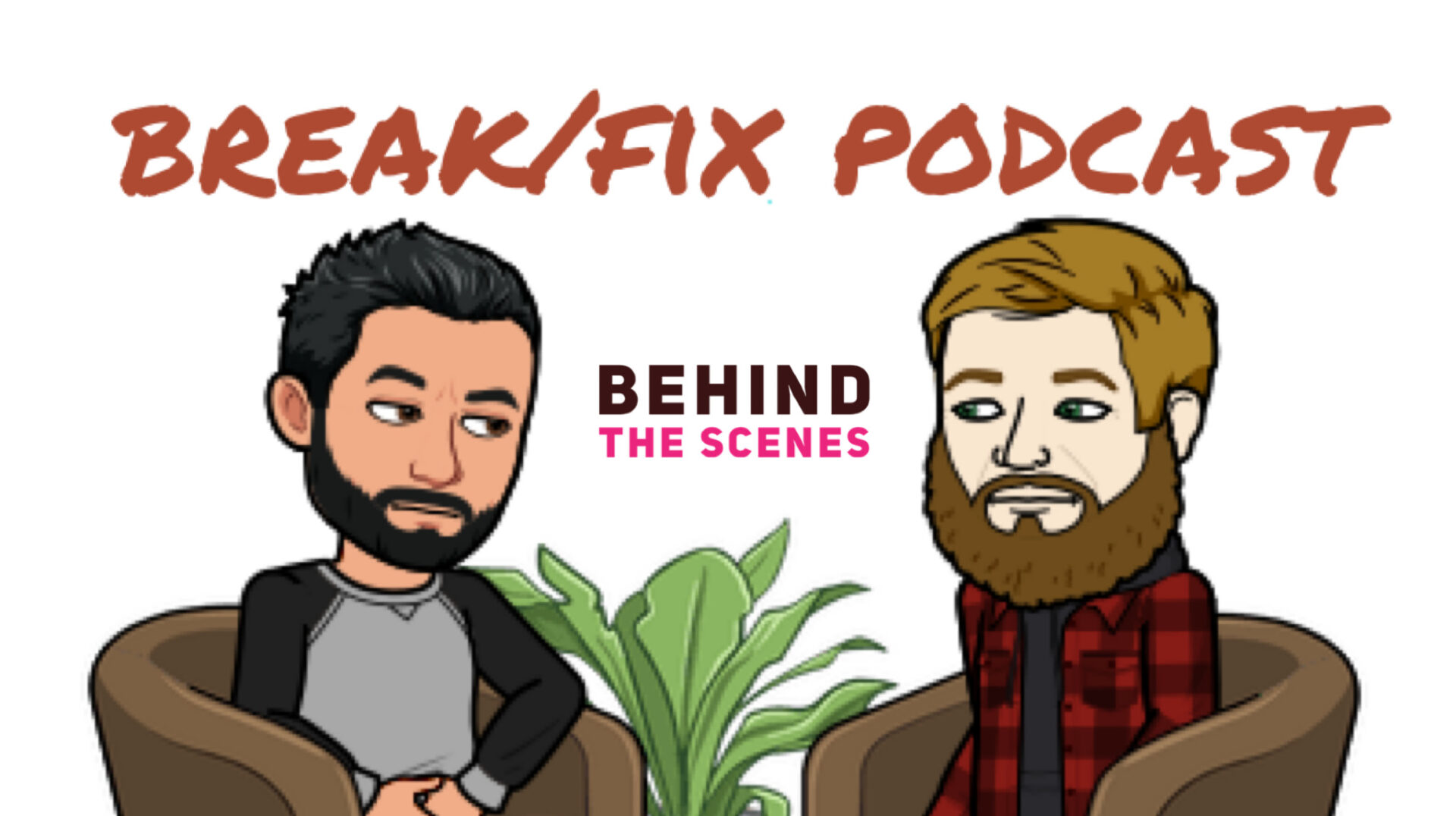
Consider becoming a GTM Patreon Supporter and get behind the scenes content and schwag!
Do you like what you've seen, heard and read? - Don't forget, GTM is fueled by volunteers and remains a no-annual-fee organization, but we still need help to pay to keep the lights on... For as little as $2.50/month you can help us keep the momentum going so we can continue to record, write, edit and broadcast your favorite content. Support GTM today! or make a One Time Donation.

If you enjoyed this episode, please go to Apple Podcasts and leave us a review. That would help us beat the algorithms and help spread the enthusiasm to others by way of Break/Fix and GTM. Subscribe to Break/Fix using your favorite Podcast App:


